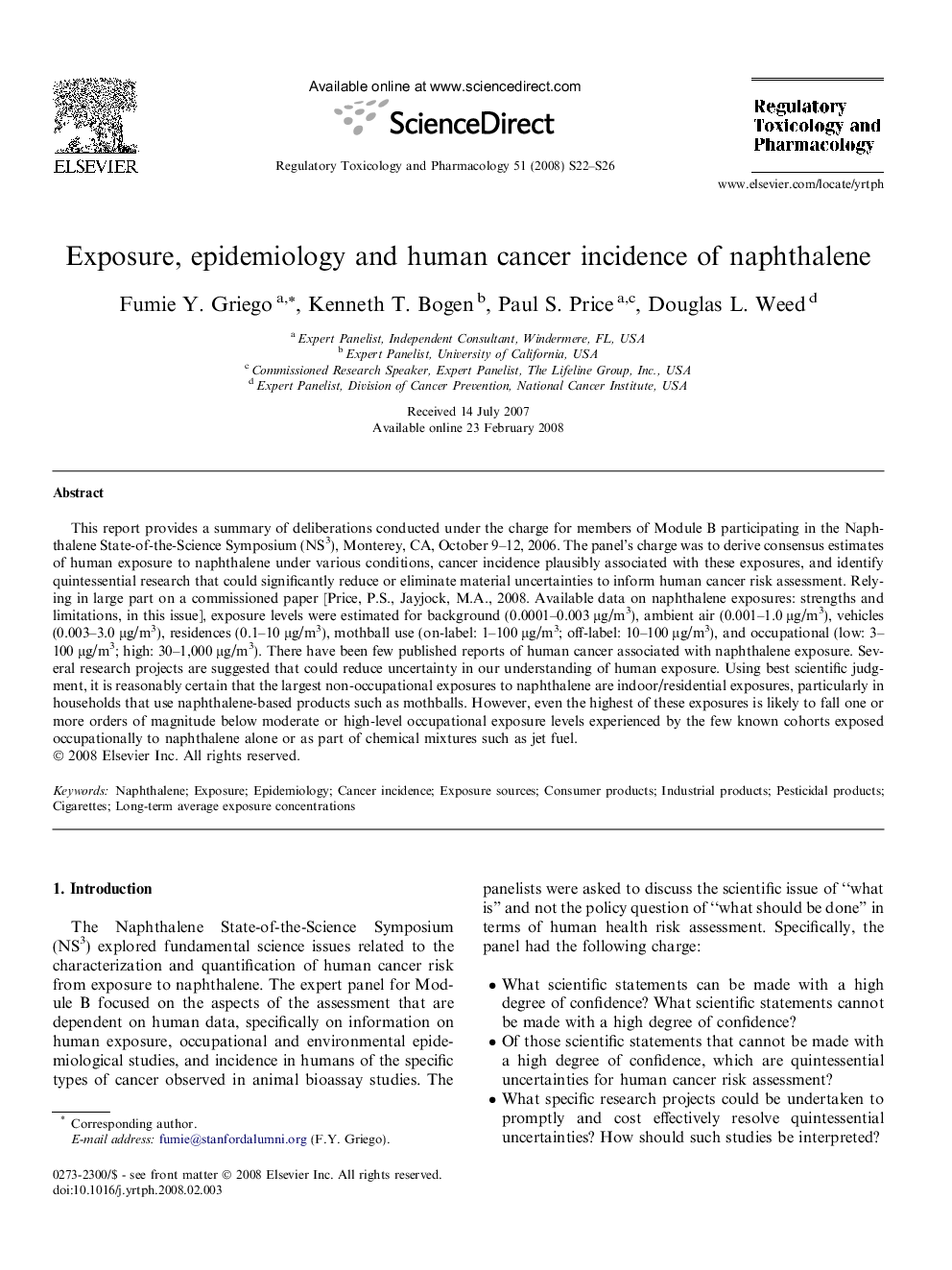| Article ID | Journal | Published Year | Pages | File Type |
|---|---|---|---|---|
| 2593053 | Regulatory Toxicology and Pharmacology | 2008 | 5 Pages |
This report provides a summary of deliberations conducted under the charge for members of Module B participating in the Naphthalene State-of-the-Science Symposium (NS3), Monterey, CA, October 9–12, 2006. The panel’s charge was to derive consensus estimates of human exposure to naphthalene under various conditions, cancer incidence plausibly associated with these exposures, and identify quintessential research that could significantly reduce or eliminate material uncertainties to inform human cancer risk assessment. Relying in large part on a commissioned paper [Price, P.S., Jayjock, M.A., 2008. Available data on naphthalene exposures: strengths and limitations, in this issue], exposure levels were estimated for background (0.0001–0.003 μg/m3), ambient air (0.001–1.0 μg/m3), vehicles (0.003–3.0 μg/m3), residences (0.1–10 μg/m3), mothball use (on-label: 1–100 μg/m3; off-label: 10–100 μg/m3), and occupational (low: 3–100 μg/m3; high: 30–1,000 μg/m3). There have been few published reports of human cancer associated with naphthalene exposure. Several research projects are suggested that could reduce uncertainty in our understanding of human exposure. Using best scientific judgment, it is reasonably certain that the largest non-occupational exposures to naphthalene are indoor/residential exposures, particularly in households that use naphthalene-based products such as mothballs. However, even the highest of these exposures is likely to fall one or more orders of magnitude below moderate or high-level occupational exposure levels experienced by the few known cohorts exposed occupationally to naphthalene alone or as part of chemical mixtures such as jet fuel.
